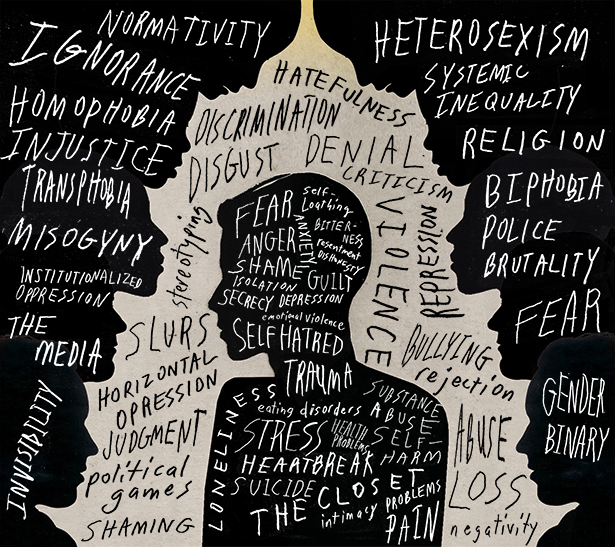A clear definition is dislike or predjuce against homosexual people(lesbian, gay, bisexual, and transgender). This is based on irrational fear, and is often related to religious belief.
Homophobia is observable in critical and hostile behavior such as discrimination and violence on the basis of sexual orientations that are non-heterosexual. Recognized types of homophobia include institutionalized homophobia, e.g. religious homophobia and state-sponsored homophobia, and internalized homophobia, experienced by people who have same-sex attractions, regardless of how they identify.
Many phrases and words may appear as harmless but can also be homophobic. The majority of LGBT pupils – 86%– regularly hear phrases such as ‘that’s so gay’ or ‘you’re so gay’ in school according to the 2017 Stonewall report.
Although sexual attitudes tracing back to Ancient Greece (8th to 6th centuries BC to the end of antiquity (ca. 600 AD)) have been termed homophobia by scholars, the term itself is relatively new, and an intolerance towards homosexuality and homosexuals grew during the Middle Ages, especially by adherents of Islam and Christianity.
Coined by George Weinberg, a psychologist, in the 1960s, the term homophobia is a blend of the word homosexual, itself a mix of neo-classical morphemes, and phobia from the Greek φόβος, phóbos, meaning "fear" or "morbid fear". Weinberg is credited as the first person to have used the term in speech. The word homophobia first appeared in print in an article written for the May 23, 1969, edition of the American pornographic magazine Screw, in which the word was used to refer to heterosexual men's fear that others might think they are gay.
Historically, state-sanctioned persecution of homosexuals was mostly limited to male homosexuality, termed "sodomy". During the medieval and early modern period, the penalty for sodomy was usually death. During the modern period (from the 19th century to the mid-20th century) in the Western world, the penalty was usually a fine or imprisonment.
With Freud’s warning in mind, and because of the long working hours that men spent under industrialization, homosocial organizations (e.g., sporting clubs and the Boy Scouts) were developed to introduce young boys to heterosexual masculine role models in the absence of their fathers. The teaching of masculinity to boys and femininity to girls was (and often remains) falsely believed to be able to prevent children from becoming homosexual.
The Affects of Homophobia
Young adults in the LGBTQ+ community are at high risk for severe mental health problems. Studies show that stress of being rejected or victimized because of sexual orientation may disrupt hormonal responses in a person.
If a young child is continuously being victimized, this cause a high risk of depression and anxiety. Given this stress, it might cause self-loathing because of the hatred for their own identity.
"Compared to their heterosexual peers, suicide rates are up to 14 times higher among lesbian, gay and bisexual high school and college students," says Michael Benibgui, who led this investigation as part of his PhD thesis at Concordia's Department of Psychology and Centre for Research in Human Development.


